London Diaries Part 1 - Tate Modern
© Hind Mezaina - Tate Modern
Today I spent my afternoon at the Tate Modern. The current big exhibition is Paul Klee's Making Visible, but it was crowded, so instead, I checked out some of the smaller exhibitions and and revisited some of the work I saw during my last visit to London which was in September.
Here are some of my highlights.
Harry Callahan - Photographs
I really like the Harry Callahan exhibition and left me thinking how everything has been done in photography and the challenge today is how to not look like you are copying someone else's work, how to make photographs of subjects and ideas that have been photographed time and time again your own.
From the towering buildings of Chicago and its urban inhabitants to grass and weeds in the snow, Harry Callahan (1912–1999) is regarded as one of the most influential figures in post-war photography, yet his work is little known in the UK.
Callahan disregarded the limits of conventional landscapes to give equal focus to both broad perspectives and individual details. His work is grouped into three themes which he described in 1975 as ‘Nature, Buildings and People’. (via Tate)
Here are some of my favourite photos taken from the Tate Modern website. I quite liked his nature shots (and I'm not usually a big fan of nature shots).
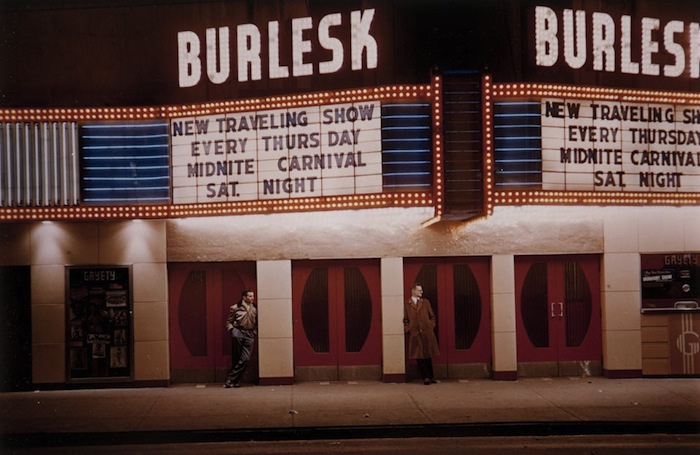
Harry Callahan - Detroit 1951 printed 1979-89 © Estate of Harry Callahan

Harry Callahan - Providence 1966, printed 1990-9 © Estate of Harry Callahan
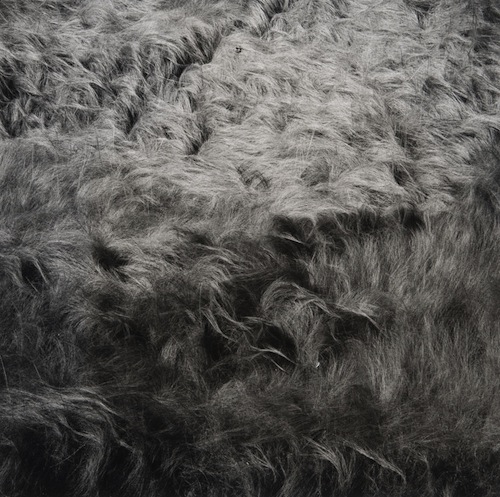
Harry Callahan - Georgia Mountains 1988 © Estate of Harry Callahan

Harry Callahan - Cape Code 1971 © Estate of Harry Callahan
Although diverse in subject matter and approach, Callahan’s œuvre demonstrates a sustained interest in line and composition, depth of field, multiple exposures and the relationship between his chosen medium and abstraction. The last of these can be seen particularly in his images of nature. Disregarding the limits of conventional spectacular landscapes (as portrayed by Ansel Adams), he gives equal focus to both broad perspectives and individual organisms in his many studies of grass, foliage and weeds in snow. In Weed Against Sky, Detroit 1948, the organic form when photographed against a clear sky could be mistaken for an abstract drawing.
Callahan would spend most mornings out shooting and inevitably photographed the cities in which he lived. His interest in line and composition features strongly in his cityscapes, be it the towering buildings of Chicago or the wooden houses in Providence, or when looking at the metropolis in more detail, with close- up images of shop windows or the abstractions of paper peeling off walls, creating a jigsaw of block colours in Chicago (Abstraction) 1951. He also turned the camera on the inhabitants, making several series of people in the streets taken from low angles, often surreptitiously as Callahan was unusually shy (Chicago 1961).
Despite the variety, there is a certain still quality which runs through all of Callahan’s work. Landscapes and portraits sit seamlessly side by side, sometimes even overlapping, for example when taken as multiple exposures, a technique he often experimented with (Eleanor,Chicago c.1949). And his colour images fit comfortably within his overall practice, perhaps because he began experimenting with colour as early as 1941 (due to the technical limitations of the medium at the time and the expense associated with making durable dye transfer prints, he didn’t print or exhibit them until the mid-1970s). (via Tate)
Hrair Sarkissian - Execution Squares
I saw this series of work in September and seeing it again was just as haunting.
Hrair Sarkissian’s Execution Squares 2008 comprises a series of photographs depicting the sites of public executions in Syria, the artist’s country of birth. The images were taken in three different cities – Damascus, Aleppo and Lattakia – in places where public executions have taken place, for civil rather than political crimes.
Sarkissian took these photographs early in the morning when the streets were quiet, around the time when executions are carried out. The subject of an execution will usually be brought to the square at 4.30 a.m., but their body is routinely left there in full view of passers-by until around 9.00 a.m. Sarkissian’s first personal experience of an execution was as a child when he passed one of these squares on his journey to school and saw three bodies hanging in the street. (via Tate)
© Hind Mezaina
Here's a video featuring Hrair Sarkissian talking about how he got into photography and his Execution Squares series.
William Eggleston
I absolutely love William Eggleston's photography and his approach to his work which I relate to a lot. The photographs displayed at the Tate are beautiful to look at, because of their colours, their compositions and the mood in each photograph. If you are ever in London and enjoy photography, don't miss this. His work will be displayed till 11th May 2014.
Mostly shooting in and around his hometown of Memphis, Tennessee, Eggleston depicts the banal and everyday. His work is frequently characterised by elements such as bold colourful interiors, cars and gasoline stations, and portraits of individuals known to Eggleston as well as strangers encountered in the street. Eggleston pays close attention to the formal organisation of the frame, often employing diagonal lines and reflections, but he also relishes strong contrasts in colour with vivid reds, blues and greens.
Though these images record a particular place at a certain point in time, Eggleston is not interested in their documentary qualities. Instead, when asked what he is photographing, Eggleston simply answers ‘Life today’. (via Tate)
Here's a video with Simon Baker (curator) discussing this show.
Chewing Gum Man
Outside the Tate Modern, I noticed an artist who goes by the name of Chewing Gum Man (his real name is Ben Wilson) creating small and intricate work on the Millennium Bridge.
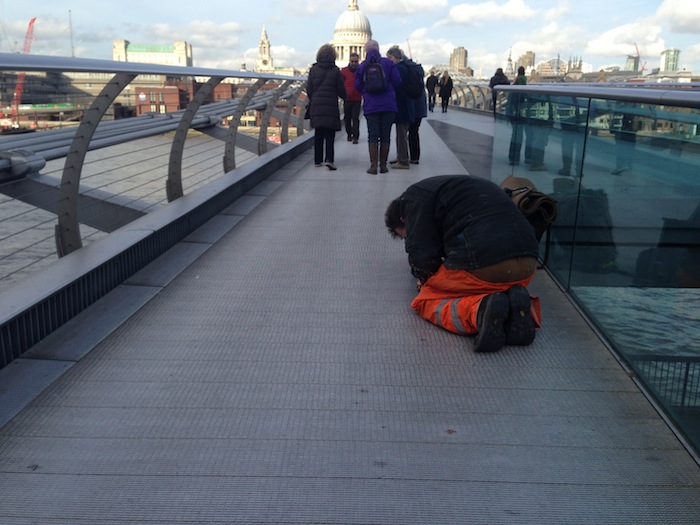
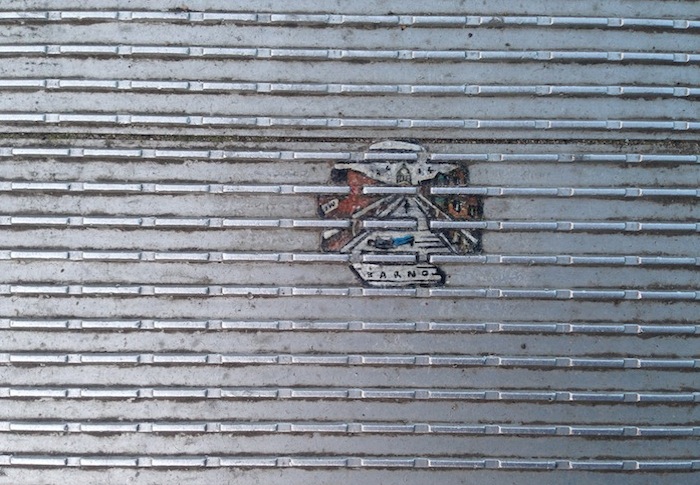
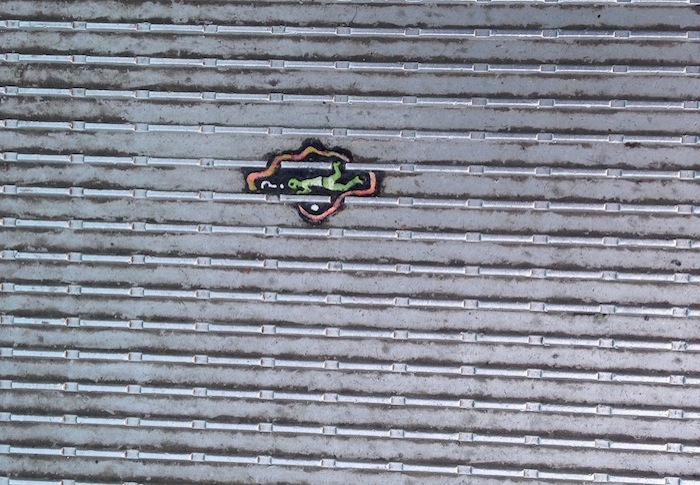
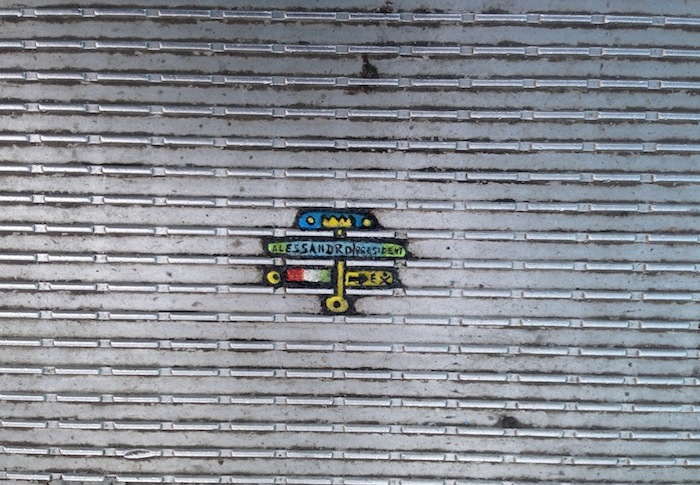
© Hind Mezaina
I found this video about him when I tried to find more information about him for this post.


